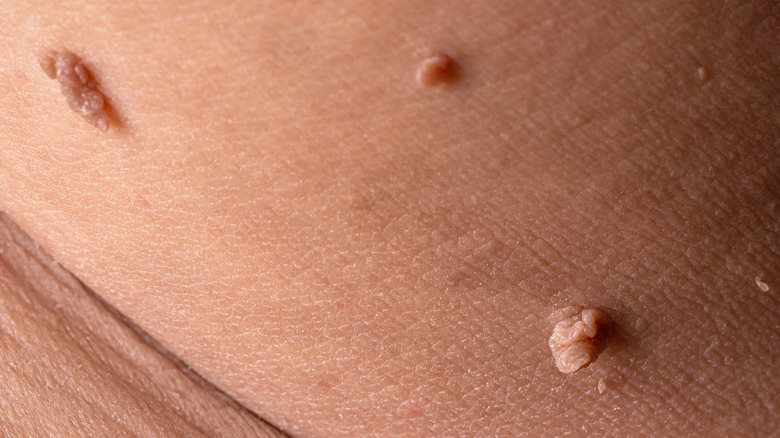This Is What Really Causes Skin Tags
Few things can ding a person's confidence like finding a new skin growth. Blemishes can be covered. But a growth defies even the best makeup. Depending on where it is, it can feel like a neon sign, screaming for attention. And few growths really set that feeling off like a skin tag. Moles can be cute, pimples are just a fact of life. But, for many, skin tags feel like something all their own and something much worse.
Of course the truth is that everyone can develop skin tags. Health Direct, a health advice site run by the Australian government, states that skin tags occur when extra cells grow in the surface level of the skin. They can happen to anyone, though a family history of skin tags may predispose some people to grow them more easily.
Unfortunately there is no way to prevent skin tags. There are ways to remove them, however. And while it might seem impossible to tell where they're going to develop, doctors have a pretty good idea of what causes the extra skin cells to grow.
Cause and removal
As Health Direct explains, skin tags tend to occur where skin rubs together. Something about the friction of skin against skin stimulates new skin cells to grow, which can lead to skin tags. This means that they're more likely to develop under the breasts, in the groin area, under the arms, or between rolls of skin. For this reason, says Health Direct, people who are overweight are more likely to develop skin tags.
Pregnancy can also cause skin tags. In these cases, however, the tags usually fall off or slowly disappear after the baby is born. This may be why WebMD states that skin tags are more common in women than in men.
Skin tags may be annoying and they can become uncomfortable if rubbed. But they are, thankfully, benign (via Drugs.com). They are not considered signs of cancer or pre-cancer, though reputable sources do recommend having them removed by medical professionals rather than removing them at home. This is because the most reliable removal methods are freezing them off, cutting them off, or burning them off with an eclectic cauterizer. All three options can produce severe bleeding and open the site up to infection, according to Health Direct.


